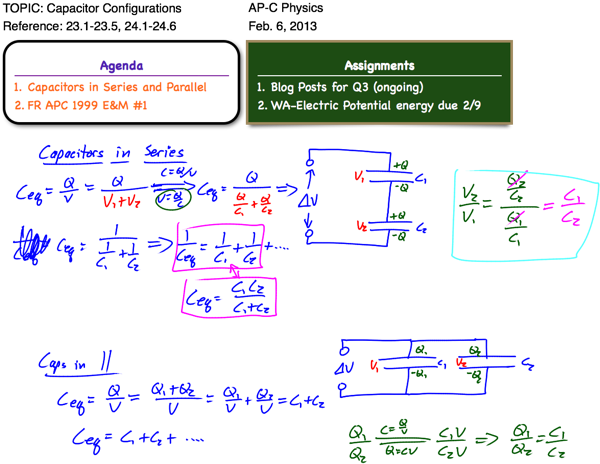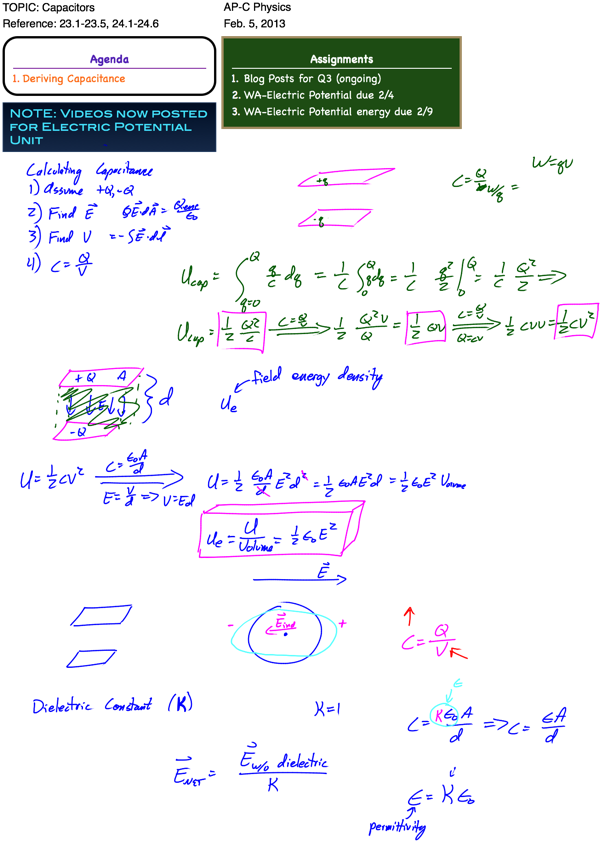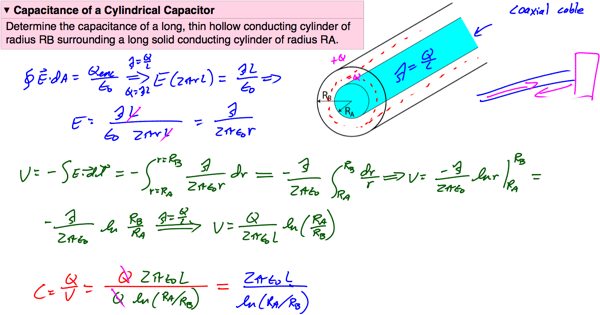
Category Archives: Capacitance
Conductors / Capacitors

Capacitor Configurations

Capacitors and Energy



RC Circuit Analysis: Charging
Create a Capacitor SimuLab
Ref. Tipler Ch. 25.1-25.6
- HW: WA-APC-Circuits 3/18
- HW: Capacitor SimuLab 3/26
PURPOSE
Using the capacitor simulation at http://phet.colorado.edu/en/simulation/capacitor-lab and the
AC/DC circuit construction kit at http://phet.colorado.edu/en/simulation/circuit-construction-kitac,
you and your team are to create a simulation lab for future AP-C Physics Students. This lab
should include a purpose, detailed step-by-step procedure, data tables, and appropriate
analysis questions to help students develop an understanding of the key learning objectives for
this activity.
KEY LEARNING OBJECTIVES
- Describe qualitatively and quantitatively the patterns and variation of the electric field
between oppositely-charged parallel plates. - Understand the relationship between capacitance, stored charge, voltage, stored energy,
area, separation distance, and dielectric constant for a parallel plate capacitor. - Calculate the equivalent capacitance of a series or parallel combination of capacitors.
- Determine the ratio of voltages for capacitors connected in series.
- Calculate the voltage or stored charge, under steady-state conditions, for a capacitor
connected to a circuit consisting of a battery and resistors. - Sketch or identify graphs of stored charge or voltage for the capacitor, or of current or
voltage for the resistor, and indicate on the graph the significance of the time constant. - Write expressions to describe the time dependence of the stored charge or voltage for
the capacitor, or of the current or voltage for the resistor.
DELIVERABLES
1. One completed lab handout, neatly typed and organized in such a fashion that it could
be immediately handed out to other AP-C physics students for in-classroom use without
further modification. Do not place your names on this copy, but instead attach your
names to it using a yellow sticky note.
2. A second copy of the lab handout, this copy having been filled out completely as if you
were a student working through the lab, and at such a quality level that it can be used as
an answer key. It is to be labeled as “Teacher’s Guide.”
3. Do not staple any of your deliverables. Paper clips will be provided upon request.
 RESOURCES
RESOURCES
- Teaching Ideas available at http://phet.colorado.edu/en/simulation/capacitor-lab.
- Teaching Ideas available at http://phet.colorado.edu/en/simulation/circuit-constructionkit-ac.
- The circuit diagram at right is a great place to start for use with your RC circuit analysis.
- Your textbook and notes.















